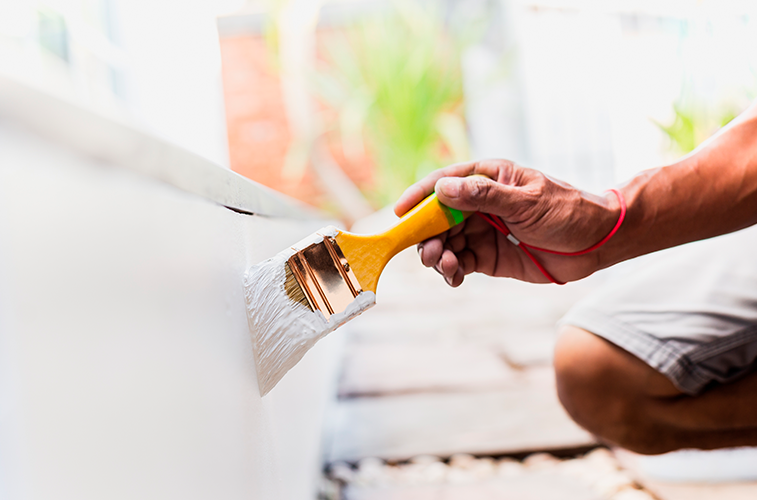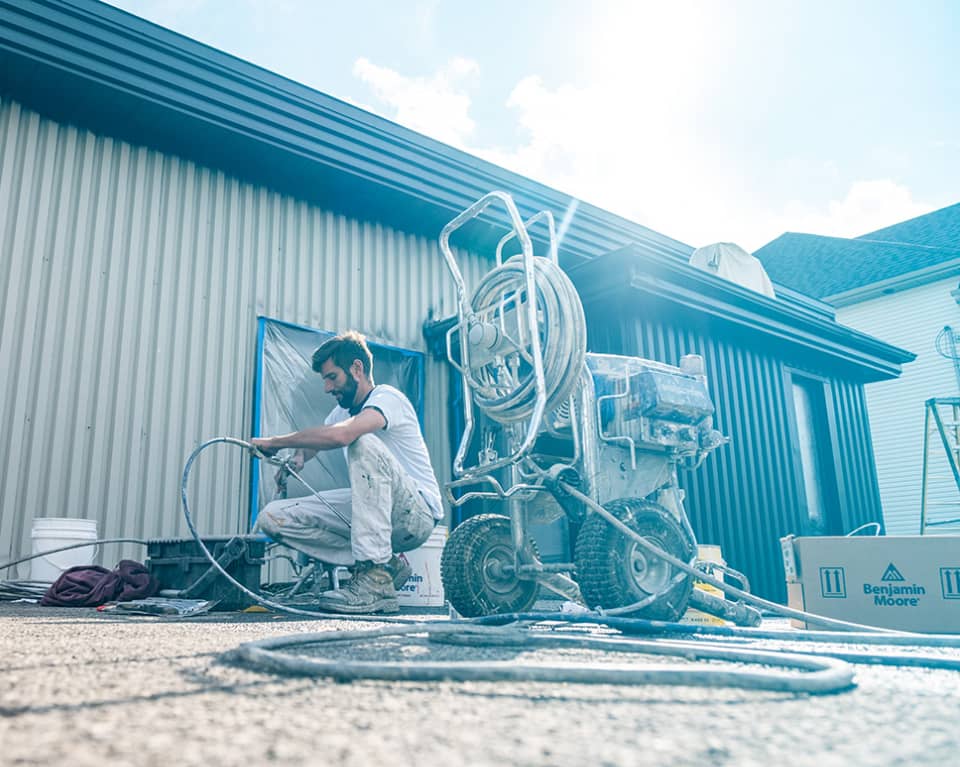Edging (cutting) a wall with a paintbrush
We were not all born with a special talent for painting and edging is never a natural gift.
Here are a few useful tips on how to do a proper edging when painting a wall.
Having high-quality equipment
First of all, it’s important to have high-quality equipment. The painter’s most important tool is obviously the paint brush. You also have to think about the lighting and the elevating equipment when needed.
Choosing the right paintbrush
FinDécor painters always do the cutting with an angle-shaped paintbrush. Thus, it’s easier for the painter to make straight lines, and the brush hairs are less crooked at the end of the day.
The most used brush is the 3 inches large angle-shaped Polymaster. We do not recommend anything less than 2 and a half inches for obvious productivity reasons.
Manipulating your brush with dexterity (no paint on the handle and no crooked hairs!)
When you leave your paintbrush down in the paint can, (to move your ladder, for example), always make sure you lay it on the dry side of the can so the handle stays clean and dry. This means you have to make sure you always have a dry side, the other side of the can may serve to remove the paint surplus.
When you leave for longer, (for your lunch break for example), leave the brush inside the can, but make sure to turn it 180 degrees so that the hairs are not all crooked when you come back. In other words, if you are right-handed, put the brush down the way a left-handed would. See the following video for more explanations.)
Dip Your brush properly into paint
Dip your paint brush into paint until approximately half of the hairs’ length. Then, do not remove the paint surplus by wiping it on the brim of the can. Wiping the brush does not make any sense, because you will have to come back for paint each two seconds. Instead, just dip it and then hold the brush over the paint (but inside the paint can) and shake it 2 or 3 times by making it rebound on the sides of the can. You will thus have 3 times more paint on your brush, you will be more productive without making a mess.
Make straight lines
The first mistake an amateur does is using masking tape. Please don’t do that! The trick is simply taking your time and being patient. Concentrate, spread the paint on the wall close to the edge line (about one cm) and then finish the edge when your brush is almost empty.
**Correct the imperfections**
Look carefully at your edge line from a 45 degree angle. Do you see the spots where the line is not straight? Stay calm so that your hand won’t shake, and take your time. The more you will try to go fast, and the more time you will waste re-doing it all over again. Don’t worry, with practice, you will make it!



